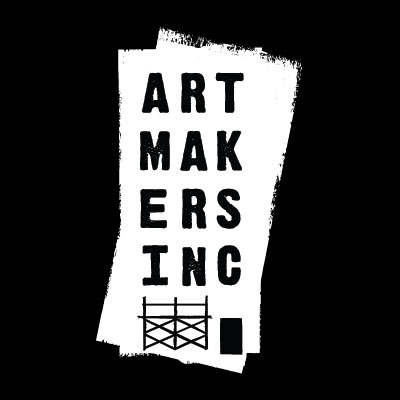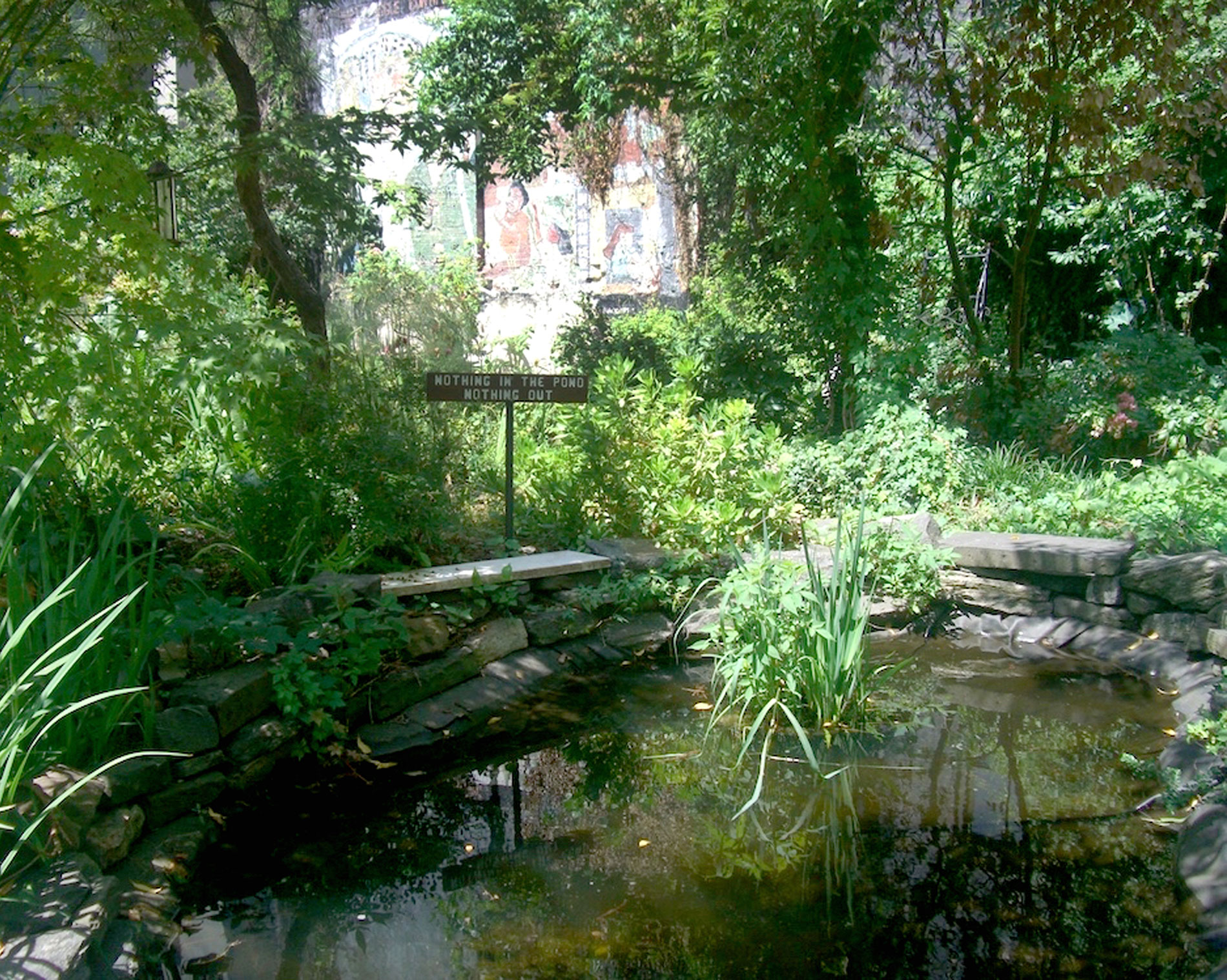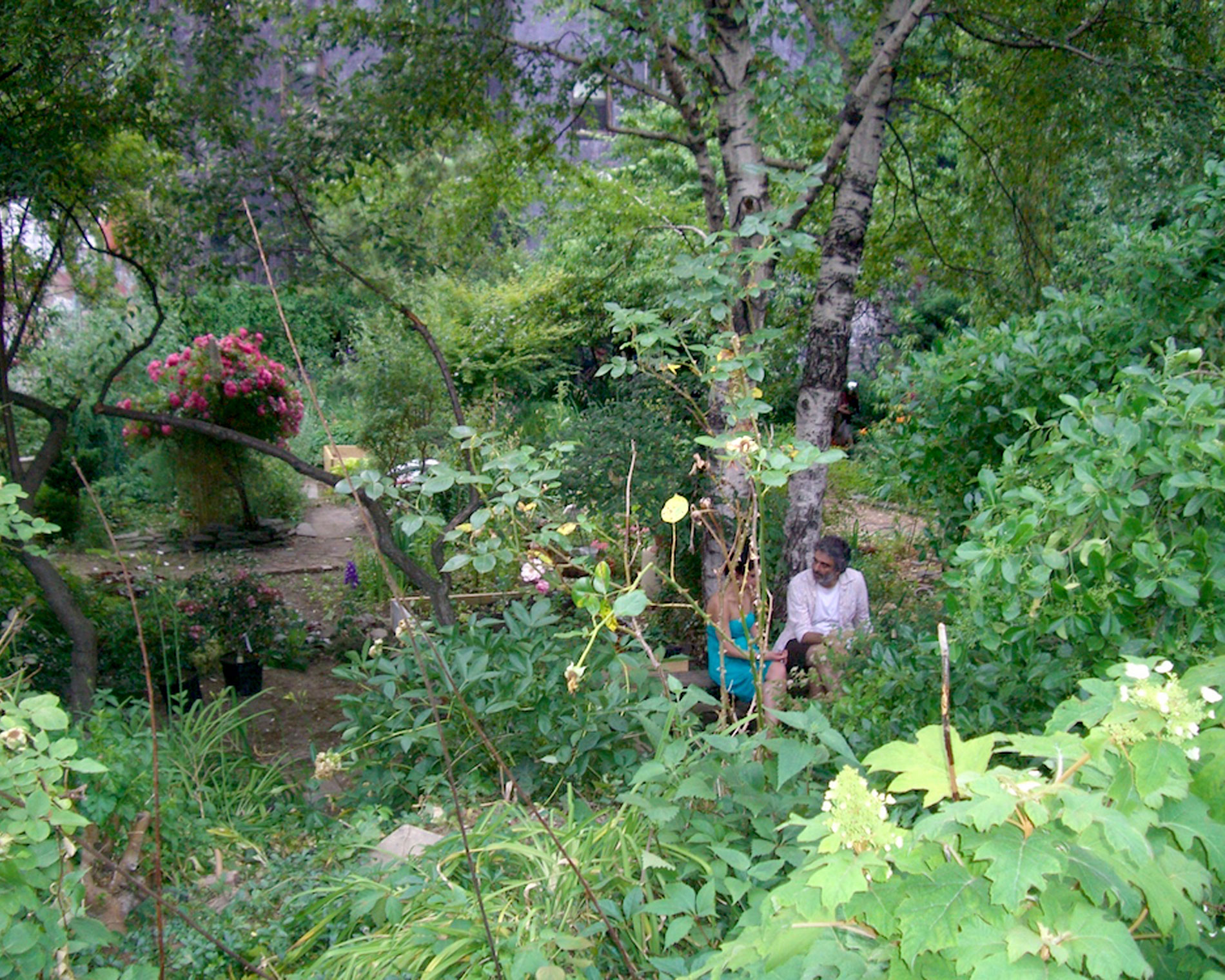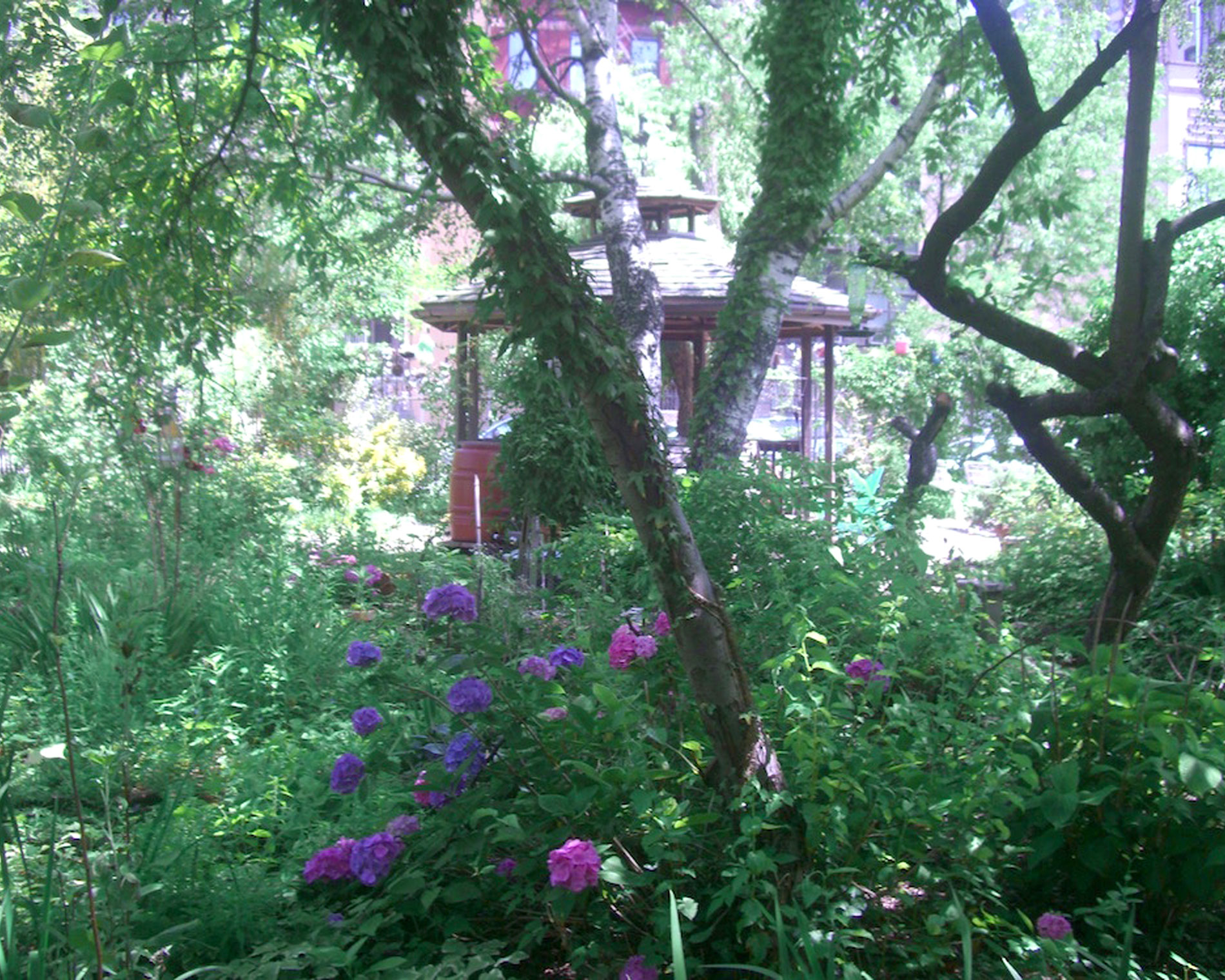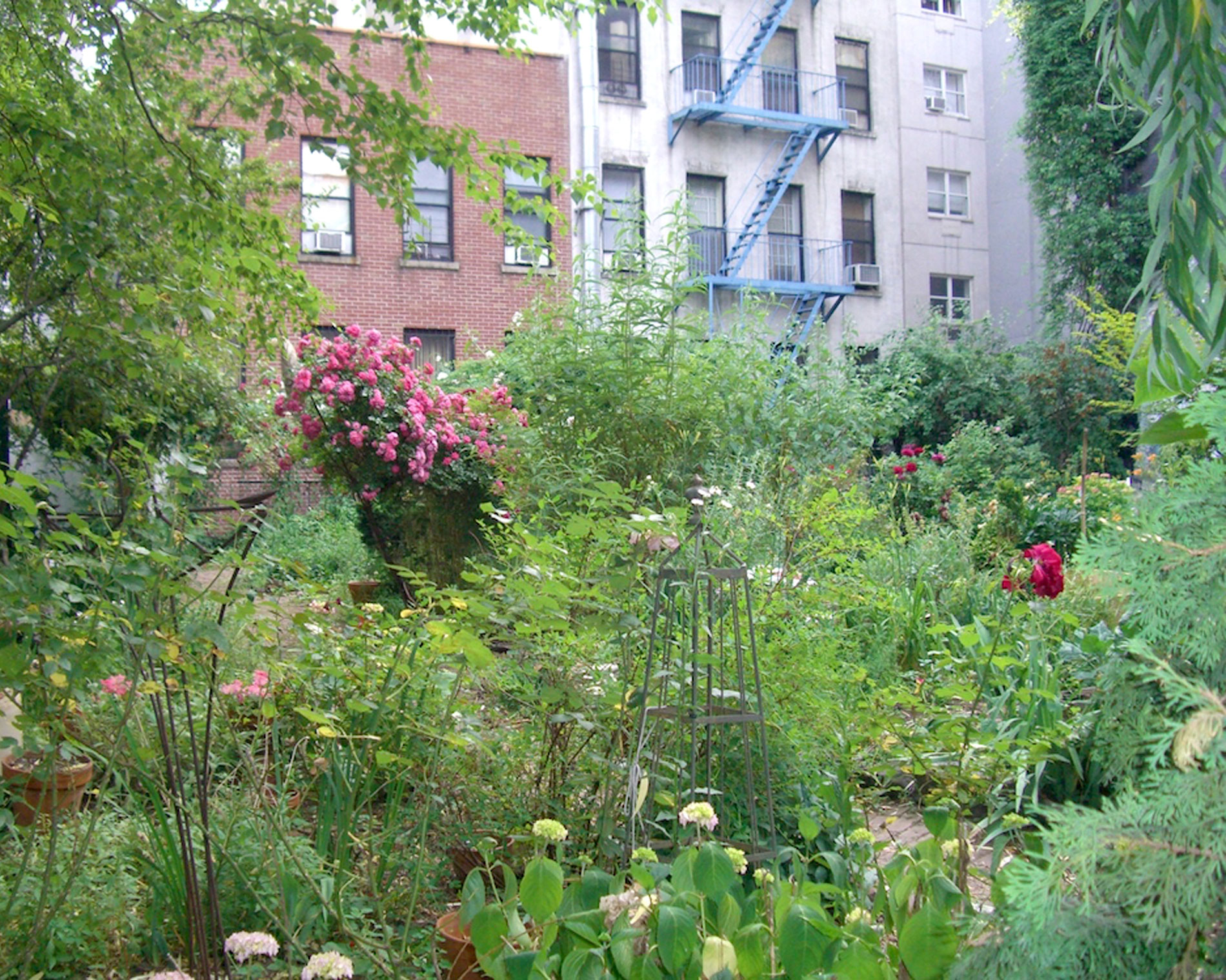La Plaza Cultural, circa 1980, when Freddy Hernandez’s 1977 La Plaza Cultural Mural overlooked the community garden. Due to wall leaks, the mural was tarred over, replaced in 1985 by La Lucha’s collective mural.
Photo © Marlis Momber
By the mid-1980s, much of New York City had emerged from the fiscally bleak years of the 1970s. However, in Loisaida, residents remained beset by poverty and drugs, victims of gentrification and displacement, and fraught community-police relations. La Plaza Cultural, too, was equally beleaguered.
In 1977, La Plaza was developed as a community garden and outdoor performance space—a collaboration of the housing and cultural organization CHARAS and the Council on the Environment of New York City (today GrowNYC). Well-tended and actively used for many years, by 1985 it was overrun by vagrants and crack addicts. Neighborhood gardeners and residents generally avoided it. Neglected, it filled up with garbage and other debris. Of the buildings surrounding La Plaza, most were vacant, some were homesteaded, and a few were taken over by squatters.
Courtesy of La Plaza Cultural Archive
La Plaza Cultural in 1985
Photo © Camille Perrottet
Listen below to an interview with CHARAS co-founder Chino Garcia—produced by La Lucha muralist Maria Dominguez, edited by Ryan John Lee, and conducted by exhibition curator Jane Weissman—describing CHARAS’ work and Loisaida in the early 1980s.
Karin Batten reflects, “La Plaza was perfect. Yes, the buildings were mostly deserted, but so many walls were available. The community was in favor of [our painting murals] as we promised to clean up what had been a park and now was mostly used for drug dealing. We also promised to welcome community volunteers, especially children wanting to help paint the murals.” Joe Stephenson recalls, “What I remember most clearly were the discarded crack vials and human feces. I told Eva that we needed to have our heads examined to be painting in such conditions. But each day before starting work, the artists put on gloves and picked up the garbage and used needles.” Kristin Reed adds, “It was a pretty depressing site—the garden overgrown and reclaimed by addicts, a bunch of looming bombed-out-looking buildings, Hell’s Angels prowling around. At the same time, we imagined creating 24 colorful murals and turning La Plaza into a center of community pride.”
Not long after the completion of La Lucha, Loisaida residents restored La Plaza. La Lucha muralist Pat Brazill remembers “walking by the newly thriving neighborhood garden and seeing how lovely all the murals looked as a backdrop to the lush greenery.” After a protracted struggle in the late 1980s against its development, La Plaza today is a permanent open space under the aegis of City of New York Parks & Recreation. In 2003 La Plaza was renamed in memory of the community activist Armando Perez who, murdered in 1999, recognized the power of gardens to bring communities together.
Courtesy of La Plaza Cultural Archive
Courtesy of La Plaza Cultural Archive
The La Lucha murals lasted only a few years, some longer than others. Ghosts of two murals can be seen on the garden façade of 610 East 9th Street. La Lucha’s collective mural disappeared under another coat of tar in the early 1990s. The Avenue C building was restored in 2015 and the developers commissioned Zio Ziegler to create a new mural – The Salvation of Energy.
Zio Ziegler, The Salvation of Energy, 2015
This mural is currently on the original site of the La Lucha Continua collective mural.
Photo © Jane Weissman
As Eva wrote in Community Murals Magazine, “An empty lot has become a place of beauty. For myself and the other artists who participated in the project, there was the sense of joy that comes from working successfully with others and the satisfaction of having accomplished something both public and coming directly from the heart.”
